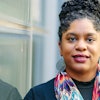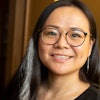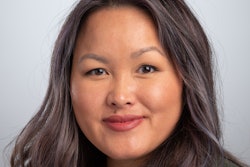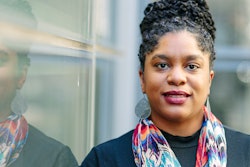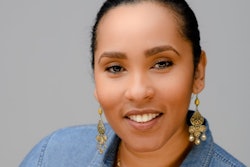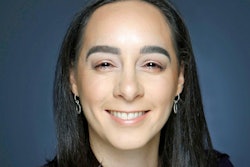Dr. Erika Moore
Title: Rhines Rising Star Larry Hench Assistant Professor, Materials Science and Engineering, Herbert Wertheim College of Engineering, University of Florida
Age: 31
Education: B.S., biomedical engineering, The Johns Hopkins University; Ph.D., Duke University; and postdoctoral fellow, Department of Biomedical Engineering, Johns Hopkins University
Career mentors: Dr. Jennifer West, University of Virginia; Dr. Warren Grayson and Dr. Jennifer Elisseeff, The Johns Hopkins University; and Dr. Michele Manuel and Dr. Cammy Abernathy, both of University of Florida
Words of wisdom/advice for new faculty members: “Feel the fear and do it anyway! You are capable of more than you can imagine.”
Dr. Erika Moore co-founded the group Black in Biomedical Engineering (BlackInBME) to amplify, support, and foster community. She uses her visibility as a Black female scientist at the University of Florida, a Research 1 institution, to advocate for others.
“In our field of biomedical engineering there are all these aspects of hidden curriculum that we wanted to be able to address by creating a community,” Moore said.
Moore is the Rhines Rising Star Larry Hench Assistant Professor in materials science and engineering at the university’s Herbert Wertheim College of Engineering. She is also the founder and president of Moore Wealth, Inc., a nonprofit organization focused on empowering historically excluded groups with financial literacy. Since 2019, Moore Wealth has gifted over $30,000 in scholarships. She has partnered with FOSSI, or the Future of STEM Scholars Initiative, to give financial literacy workshops to FOSSI scholars.
The COVID-19 pandemic significantly slowed Moore’s research and her ability to train her students. She arrived at the University of Florida in July 2020. There were delays in being able to order needed supplies, but everything was not negative.
“This granted me more time to spend connecting internationally and nationally, where I had not previously considered those networks,” said Moore, who teaches junior and senior undergraduates and first and second-year graduate students. “When you are met with challenges, the challenges can invite different opportunities that you had never seen before.
“It also allowed me to teach and connect with students even if it was online,” she continued. “I had copious amounts of office hours because I was concerned with all the content being online, how they would capture or remember the content. I felt the engagement and connectivity looked different during the first year of the pandemic.”
Moore found her research focus when she saw gaps in the research in her field of immunology, materials science and tissue engineering for regenerative medicine. She explains that one of the main gaps was that, when diseases were being modeled, certain variables were being removed. The removal of those variables limits which populations are considered. If only one age group is considered, then major aspects are not being examined.
“How age alters or progresses the disease at different rates,” Moore added. “As we age, we know that there are differences in wound healing. … We thought to design a model of aging where we try to understand and appreciate the differences in wound responses.”
“She has made fundamental strides in understanding how age affects tissue regeneration, in designing new materials to accelerate wound healing, and in developing a tissue model of lupus,” said Dr. Michele V. Manuel, professor and chair of Moore’s department. “Her work impacts anyone who is aging and anyone who suffers from autoimmune disease susceptibility.”
Moore currently has six Ph.D. students, one master’s student, and four undergraduates working with her in her lab. They are at work on several projects, one of which is building a model of lupus vasculitis, trying to understand how vasculitis progresses in lupus according to self-identified ethnicity of the patients. They examined this because of lupus’ disproportionate impact on women of color. She says she believed it was important to study ancestry and ethnicity within this examination.
“If you model any disease, you have to know which populations the disease affects,” Moore said. “If we’re designing tissue models or systems, we really must consider who is impacted by these diseases and how we can better model those variances that are seen.”
Moore encourages her students to innovate. “Innovation comes probably at the leading point of creativity and curiosity,” she said. “I try to cultivate both of those in my group. We create new questions that we want to answer.”


